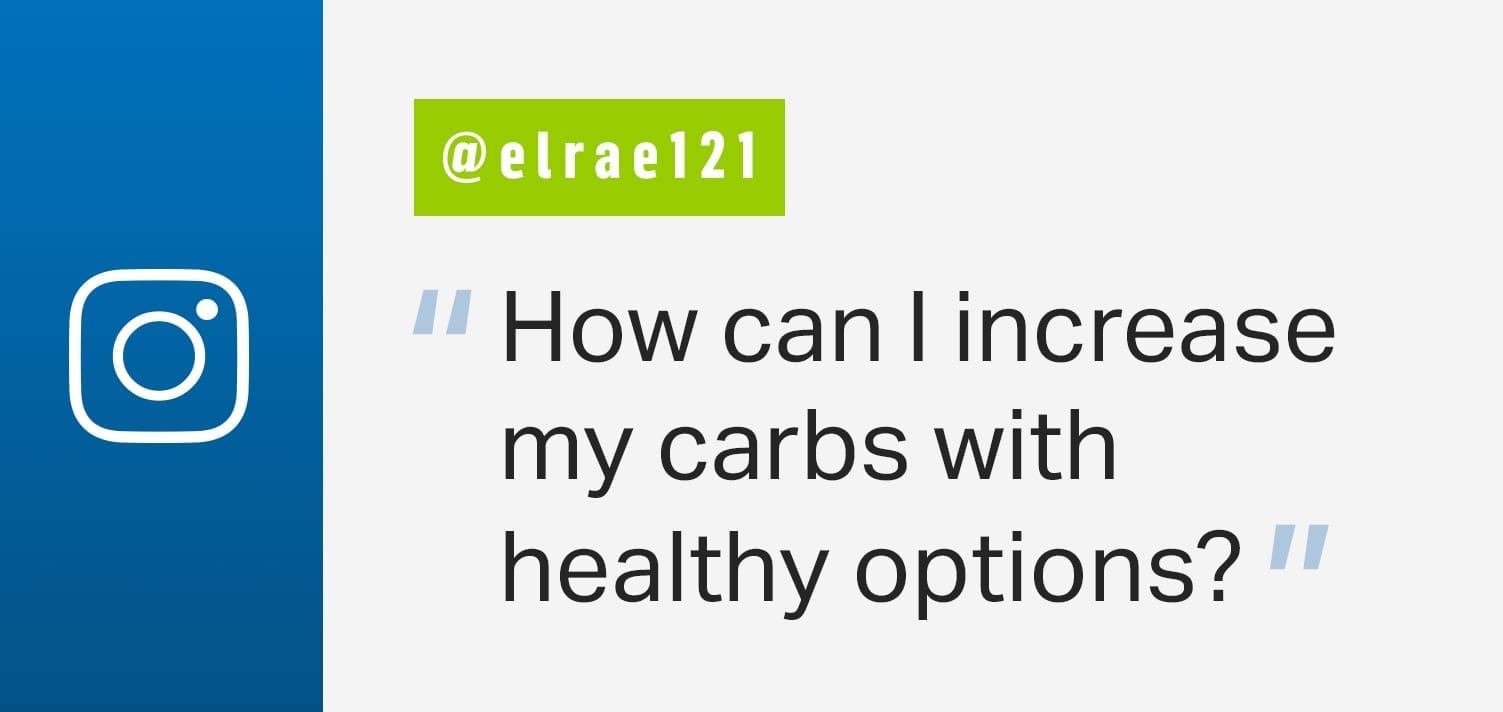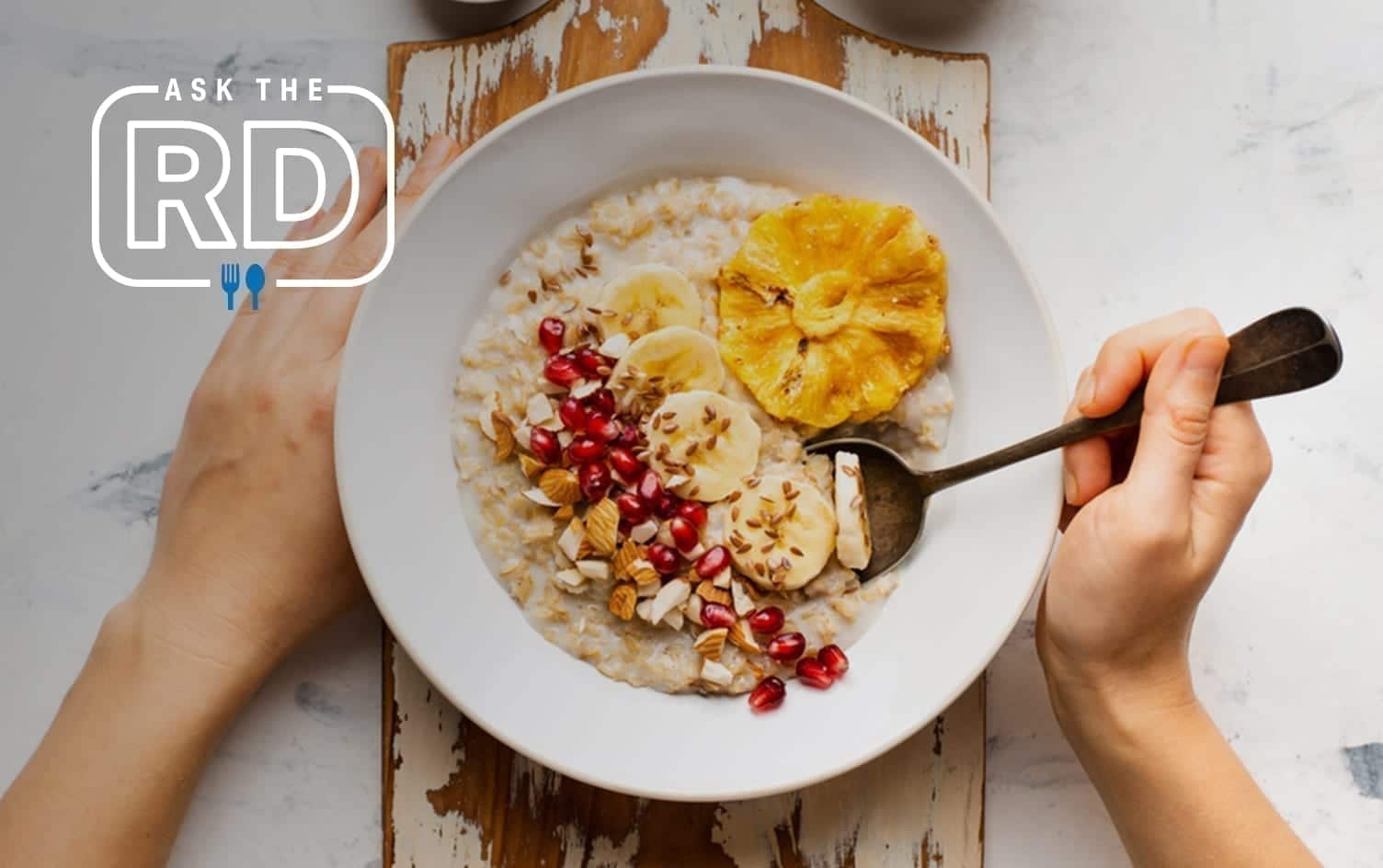
Carbohydrates are the body’s main energy source, and they’re key for regular daily activity (i.e. thinking, breathing), exercise and sports performance. Unfortunately, carbs are often unfairly maligned due to diet culture, leading to several myths. Cutting back too drastically can leave you feeling sluggish and prompt cravings for energy-dense foods. In fact, the brain alone needs 130 grams of carbohydrates per day to operate optimally.
The truth is not all carbs are created equal. While processed carbs can lead to blood sugar spikes and energy crashes, whole food sources contain satiating fiber and other essential micronutrients.
The Institute of Medicine recommends getting 45–65% of total daily calories from carbohydrates. You can track your intake with an app like MyFitnessPal; the default recommendation is 50%, but that’s a starting point, which you can tweak to meet your specific needs. If you need help figuring out what’s best for you, it’s helpful to seek expert advice from a registered dietitian or other healthcare professional.
MAKE BREAKFAST COUNT
It’s important to prioritize a quality carb at every meal, starting with breakfast. Carbs are also necessary to replenish your body after a workout or fuel up for a later workout. Protein and fat should also be present for a well-rounded, satiating meal. For example, reach for oatmeal with fruit and nuts (or nut butter) or a whole-grain bagel with egg, sliced tomato and greens. You could also top whole-grain toast with mashed avocado, peanut butter and banana or smoked salmon.
BEFRIEND BEANS
While beans are a great protein source, they’re a starch and full of complex carbs. Beans are also rich in gut-friendly fiber and a good plant-based iron source. Canned beans are a budget-friendly option. Keep an eye on sodium levels and rinse before using. They’re great in a variety of dishes such as soups, chilies, salads, pastas, tacos and even brownies.
INCLUDE PASTA AND BREAD
Often bread and pasta get a reputation for being “unhealthy” carbohydrates, and it’s simply not the case. Both are budget-friendly, complex carbs that can diversify the diet and provide the body with necessary energy. Whole-grain versions, in particular, offer more fiber, protein and micronutrients, compared to traditional white flour varieties. However, the latter can still be useful in the diet if you need a source of quick-digesting carbs for endurance activities, for instance.
The key is to balance carbs with protein, fat and veggies to provide a variety of nutrients, promote satiety and keep blood sugar stable. For example, a pasta dish with fresh herbs, olive oil, vegetables, chickpeas and grated cheese or a hearty sandwich with turkey, avocado, greens, tomato and sliced cucumber are well-rounded, healthy meals to increase your carb intake.
ENJOY POTATOES
Potatoes (both the traditional variety and sweet potatoes) are also a great source of complex, nutrient-dense carbohydrates. They’re high in potassium, vitamin C and fiber and are extremely versatile. Try them with eggs in a breakfast hash, as pizza crust, baked and topped with guacamole, in casseroles, grain bowls, tacos or added to soups and salads.
SNACK ON FRUIT
Fruit is also a carbohydrate, and while it contains sugar, it is packaged with other nutrients the body needs such as fiber, antioxidants, vitamins and minerals. Portable fruits like apples and bananas are ideal snacks paired with a handful of nuts or a piece of cheese. Another healthy option: Top protein-rich Greek yogurt or cottage cheese with berries.
THE BOTTOM LINE
To keep your body functioning at its best, eating enough quality (aka minimally-processed) carbs is crucial. The ideas above provide a great starting point, but with any carb, the key is looking at the big picture and what else is on your plate. Lean protein sources, healthy fats and veggies should also play a starring role in a varied, plant-forward diet. This sets you up for success long-term, and of course, leaves room for fun carbs like cookies or ice cream from time to time, too.
Unlock an experience that’s like having a dietitian, trainer and coach — right at your fingertips. Go Premium for expert guidance and exclusive tools that will help you reach your personal health goals.




